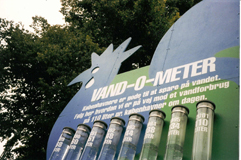 |
 |
 |
 |
 |
 |
 |
 |
 |
 |
 |
 |
Decision making process
Name of the case study
Water savings in Copenhagen
Decision making process - stages
The indicators were used in all stages of the decision making process (for instance monitoring and evaluating the success of the water saving campaign, defining goals for coming years, using benchmark on a local scale).
Decision making process - levels
The indicators were used at all levels (municipal and regional, political and technical).
Decision making process - sources of information
The water saving campaign and the goals were suggested by Copenhagen Water / Copenhagen Energy, and decided politically by the Municipality of Copenhagen.
Decision making process - who are the decision makers
See information on the stages and levels of the decision making, and information sources.
Decision making process - who made the final decision for project implementation
See information on the stages and levels of the decision making, and information sources.
Name of tool
Indicators on water consumption
Decision making process - tools in decision-making process
The indicators were used in all stages of the process, with the aim of influencing different actors.
The influence on consumers is very difficult to assess, as the indicator on water consumption was just one of many initiatives in the water saving campaign. Other possible reasons for a declining water consumption are:
• Consumption reflects the rising water prices,
• Awareness on water savings amongst residents has spread, as a result of many years´ campaigns,
• More individual water meters installed,
• Technological development of household technologies, making toilets, taps, dishwashers, washing-machines etc. more water-effective, and almost "standard-solutions".
The
Influence on other actors. The average consumption has served as a signal to the municipalities and counties where groundwater is extracted, that people in Copenhagen really do what they can to save water. This reduces the environmental effects in the hinterlands, and is a good help for Copenhagen Water in the negotiations with counties on permissions for groundwater catchment. Copenhagen Water is totally dependent on permissions for water catchment from places in the surrounding counties. These permissions have to be negotiated with the counties each five to ten years.
Benchmarks and goals were formulated during the campaign. In 1994 the goal was to reduce the consumption to 110 litres/person/day in 2001. In 2001 the goal was re-formulated to 120 l/p/d in 2005 and 110 l/p/d in 2010.
The indicators for water consumption strongly supported the success of the water saving campaign.
Decision making process - how was the information for the dmp disseminated
Information has been disseminated through a mixture of direct and indirect information; mainly, information about water savings was disseminated broadly using brochures, newspaper articles, TV-spots, activities for children and other. Also, some groups have been contacted directly, for instanced consumer groups, housing estates or neighborhoods with a high consumption.

As a part of the campaign, this "Water-O-meter" was placed outside Copenhagen Water´s headquarter. The tubes illustrates how the water consumption in Copenhagen has developed, and what the goals is.
Decision making process - how was the public involved
The public was the target of the campaign, and was involved through information efforts, rising water bills, technical possibilities to reduce water consumption etc..
Decision making process - was there public discussion over the project
The water saving campaign managed to create big public awareness about water consumption and sustainable water management. This included all stages.
What tools were used to assess sustainability?
Indicators on water consumption
More information